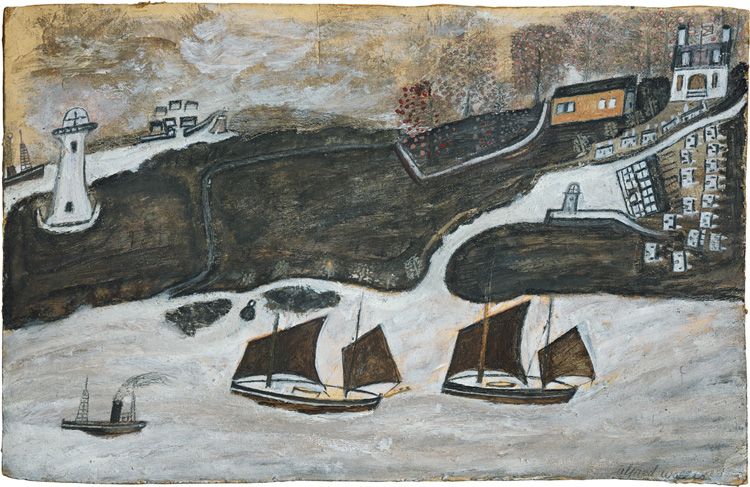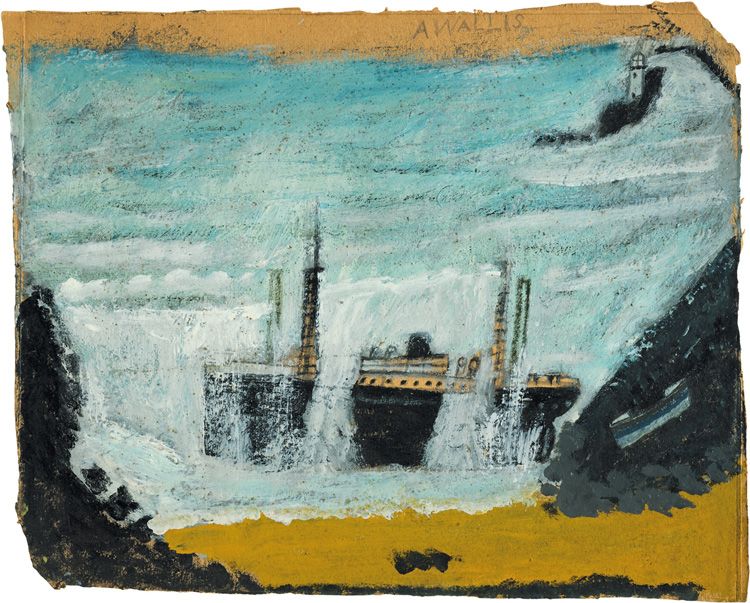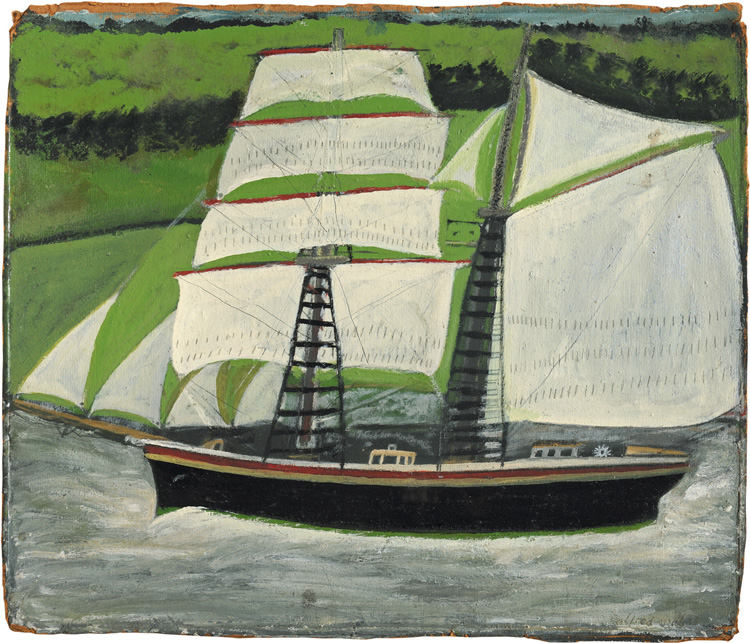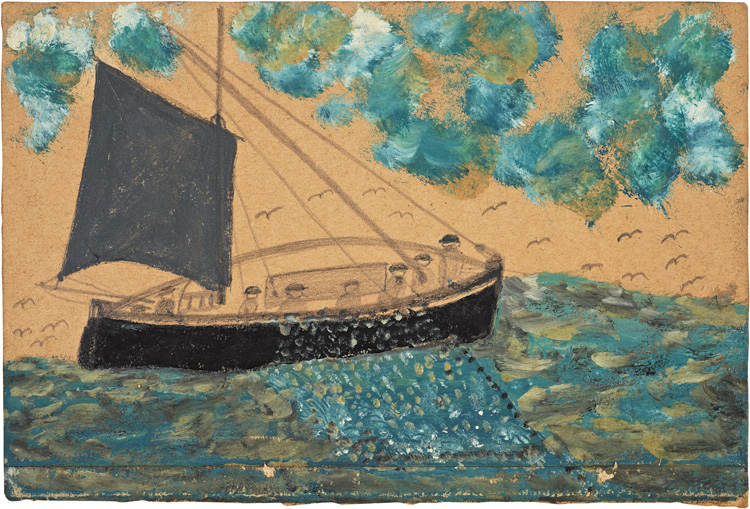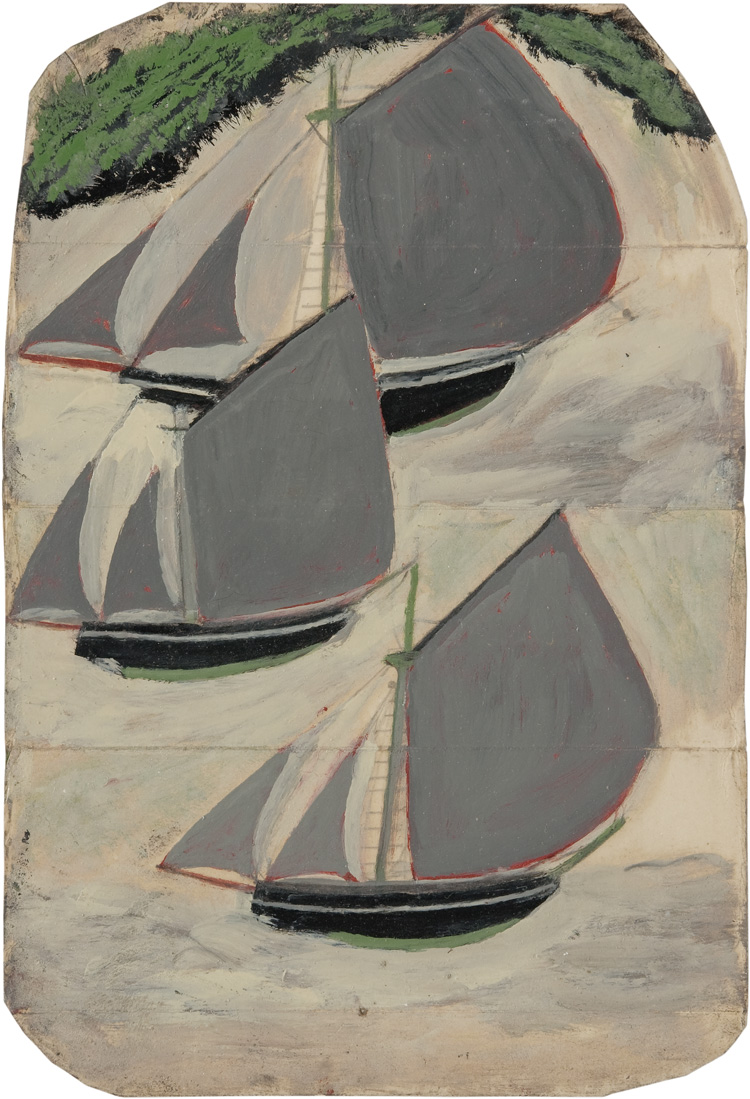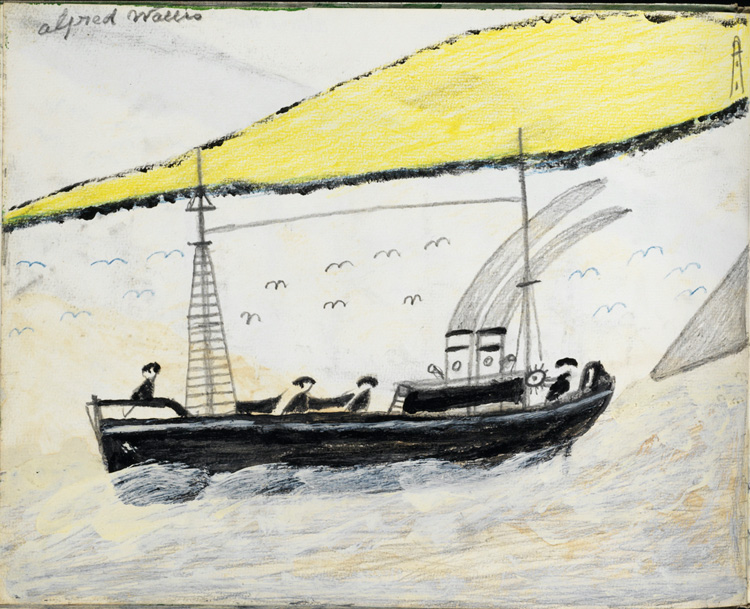

Kettle’s Yard, Cambridge
24 October 2020 – 24 January 2021
In line with current government guidance, Kettle’s Yard House and Gallery will be temporarily closed until further notice
by EMILY SPICER
In landlocked Cambridge this winter, Kettle’s Yard is exploring the high seas with more than 60 rarely exhibited paintings by folk-artist-turned-modernist-muse Alfred Wallis (1855–1942). The story of the “discovery” of Wallis has become almost mythologised in the timeline of modern British art. It began with a chance meeting with Ben Nicholson and Christopher Wood, who stumbled across the old man’s cottage on a day trip to St Ives in Cornwall. There, the two young artists found the diminutive pensioner painting pictures on pieces of cardboard gifted to him by the local grocer. They were instantly convinced of his talent, of his authenticity as a naive painter able to capture experience without artifice or pretence. Suddenly, British modernism had its very own Henri Rousseau.
[image2]
In addition to Wood and Nicholson, Wallis found fans in Barbara Hepworth (who would also settle in St Ives, in 1939) and Jim Ede, the art collector and curator whose cottage in Cambridge is now part of Kettle’s Yard. Ede never met Wallis, but the two became friends through a regular correspondence. Wallis sent parcels – often containing dozens of paintings – so that Ede could purchase any that were of interest. He added more than 120 to his collection.
Some of Wallis’s letters are on display in the first room of this exhibition. They are short and written on tiny scraps of paper, but provide an insight into the artist’s way of working. “I do not put collers what Do not Belong,” he stated in one missive dated 1935. “Their have Been a lot of paintins spoiled By putin collers where they do not Blong.” The “collers” Wallis favoured were the greys, blacks and greens of the household and ship paint he used. This limited palette gave his works a sort of signature solemnity and held together the elements of his compositions. He could fit an entire harbour on to a tiny board, ignoring perspective, of course, and the image would look pleasingly balanced.
[image3]
Not surprisingly, boats are the dominant theme in Wallis’s paintings. He first went to sea aged nine years old and for most of his life worked on deep-sea fishing boats. The first room of this exhibition celebrates his inevitable preoccupation with life on the ocean waves and includes a letter to Ede, explaining his desire to capture a changing world. “What I do mosley is what use to bee out of my own memery what we may never see again as thing are aletered all to gether.” And so boats, of types long since obsolete, haunt Wallis’s paintings in greys and whites, as they negotiate the frothing seas of his memory. Some are accompanied by large fish, which are, he explains, not what they seem, “for each boat has a soul, a beautiful soul shaped like a fish, so they fish I’ve painted aren’t fish at all, you wouldn’t be any good without a soul, would’ee”.
[image4]
Wallis was, according to Nicholson, “a fierce and lonely little man”, whom the neighbours regarded as an “eccentric curiosity”. He led a sparse, mostly ascetic existence, read the Bible almost every day and believed it was a sin to paint on Sundays. But despite his rather hermetic nature, he was loved by the artists and collectors who treasured his work. When he became too ill to live alone, the art critic Adrian Stokes arranged for his care at the Madron Institute, where he was well looked after. Stokes, Nicholson, and the artist Margaret Mellis provided him with the materials he needed to continue working, fetching him colours and furnishing him with sketchbooks.
[image6]
In his final years, Wallis continued to paint boats, but also turned his attention inland, to houses and woodlands, all rendered with his usual flattened perspective. As he neared the end of his life, he explored religious themes, too, and the last room contains some of these works. There is, for example, an odd composition that includes two Jesuses on the cross, one above the other, in an ordinary-looking field with a pair of white dogs. A casual passerby crosses the bottom of the composition, seemingly unconcerned by the strange scene. He also painted Noah’s ark, perched on a vivid green Mount Ararat, together with a group of grateful survivors giving thanks. Perhaps, as thoughts of his own mortality became sharper in his mind, Wallis sought solace in such stories, and turned to his Bible with even greater fervour.
[image5]
The curators of this exhibition draw parallels between Wallis’s life of isolation and our own experiences during lockdown. Wallis took up painting to stave off the loneliness he felt after his wife died and, in doing so, found a way to express himself and communicate his experiences. From adversity comes opportunity, and the same can be said for this exhibition. The Covid-19 pandemic has disrupted the schedules of every museum and thrown our usual cultural rhythms into chaos. But Kettle’s Yard saw an opportunity in the unexpected gap in its programme. The curators had been considering a show of Wallis’s work for some time, and so, thanks to a change in circumstances, here it is, touching, life-affirming and full of charm.
